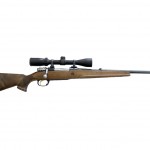Gun Security for Hunters
 Hunting is a sport practiced by thousands of individuals each year in the U.S. When practiced with safety, it can provide hours of enjoyment and camaraderie among hunters. However, there are also thousands of hunting accidents each year across the country, most of which are due to mishandlings and misunderstandings of gun safety and gun security. It is possible to avoid a great deal of harm and risk of injury and loss of life if you internalize some basic gun safety and security tips described in this guide.
Hunting is a sport practiced by thousands of individuals each year in the U.S. When practiced with safety, it can provide hours of enjoyment and camaraderie among hunters. However, there are also thousands of hunting accidents each year across the country, most of which are due to mishandlings and misunderstandings of gun safety and gun security. It is possible to avoid a great deal of harm and risk of injury and loss of life if you internalize some basic gun safety and security tips described in this guide.
The first and most important aspect of gun security involves understanding the weapon or firearm you intend to use. If you have not already done so, you should read the owner’s manual of your gun from start to finish; there is no reason not to have a thorough knowledge of your gun once it is in your possession.
Additionally, you should become thoroughly familiar with the process of taking apart your gun and putting it back together, as well as with how to inspect every part of it. When you know how what your gun is and is not supposed to do, how it is put together and how it can be taken apart, and what it looks like inside and out, you will find it easy to pinpoint any strange features or behaviors from your gun when holding, using, or inspecting it in the field. Such a knowledge can save your life or the lives of others.
Similarly, it is possible that you may, in a moment of carelessness, drop your gun or happen to fall with it. If either incident occurs, you should immediately take apart your gun and ensure it does not have any damage internally or externally. The slide should operate smoothly, as should the trigger. Nothing should be dented or warped or broken. If there is any doubt in your mind about the integrity of your weapon, you should call it a day and refrain from firing it until you can have it thoroughly inspected and repaired if necessary.
You should also be knowledgeable about the ammunition you use in your gun. For example, if you own a rifle, you should know that a twenty two caliber bullet may travel past two and a half miles if fired from your gun. A knowledge of the damage your ammunition can inflict and over what distances is essential when out in the field, if you intend to keep from accidentally causing severe injury or death to other individuals.
When transporting your gun, you should always keep it unloaded until you are completely ready to start hunting. For example, if you are about to hike to another hunting site and do not expect to see any game, your gun should be unloaded before you begin. Store the gun and its ammunition separately, and lock the containers for both. Loaded weapons should never be hauled about a moving vehicle.
More generally, you should treat all guns as if they are loaded and ready to fire at all times. You should never stare down the barrel of your gun, no matter what reason you may have for doing so. Rather, the muzzle of your gun should point away from yourself and from others every single time your gun is out. There are numerous safe carrying positions to haul firearms while hunting, but none of them will involve your gun being pointed at another individual. This is easy to forget, but crucial.
Remember, the right to hunt also comes with responsibilities. Perhaps the primary responsibility of a hunter is to practice gun safety and gun security at all times. Don’t wait until you’re in the wrong place at the wrong time to learn these fundamental principles; take the time to become a safe hunter with a good handle on your gun, and your loved ones (and those of other hunters) will thank you.
